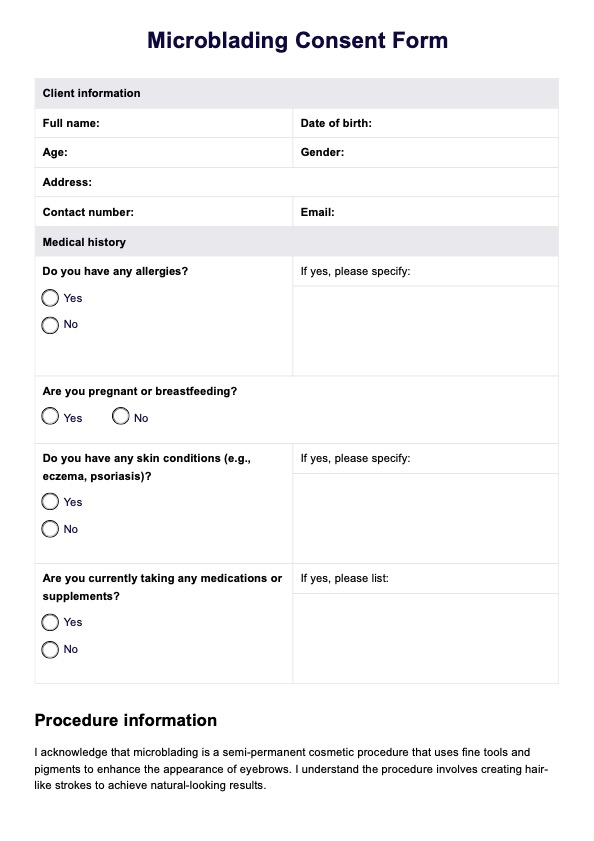Consent is required to ensure the client is fully informed about the procedure, including its risks, benefits, and aftercare requirements. It protects both the client and the practitioner by establishing clear expectations and legal compliance before proceeding with the treatment.

Microblading Consent Form
Get access to a free Microblading Consent Form for aestheticians, ensuring informed consent and legal compliance.
Microblading Consent Form Template
Commonly asked questions
Yes, most regions require a specific license to perform microblading, such as a tattoo or permanent makeup license. Additional certifications may be required depending on local health and safety regulations.
To perform microblading, practitioners typically need a certification from an accredited microblading training program and, in many areas, a license to practice permanent makeup procedures. Additional training in bloodborne pathogens, skin anatomy, and safety protocols is often required to meet regulatory standards.
EHR and practice management software
Get started for free
*No credit card required
Free
$0/usd
Unlimited clients
Telehealth
1GB of storage
Client portal text
Automated billing and online payments











